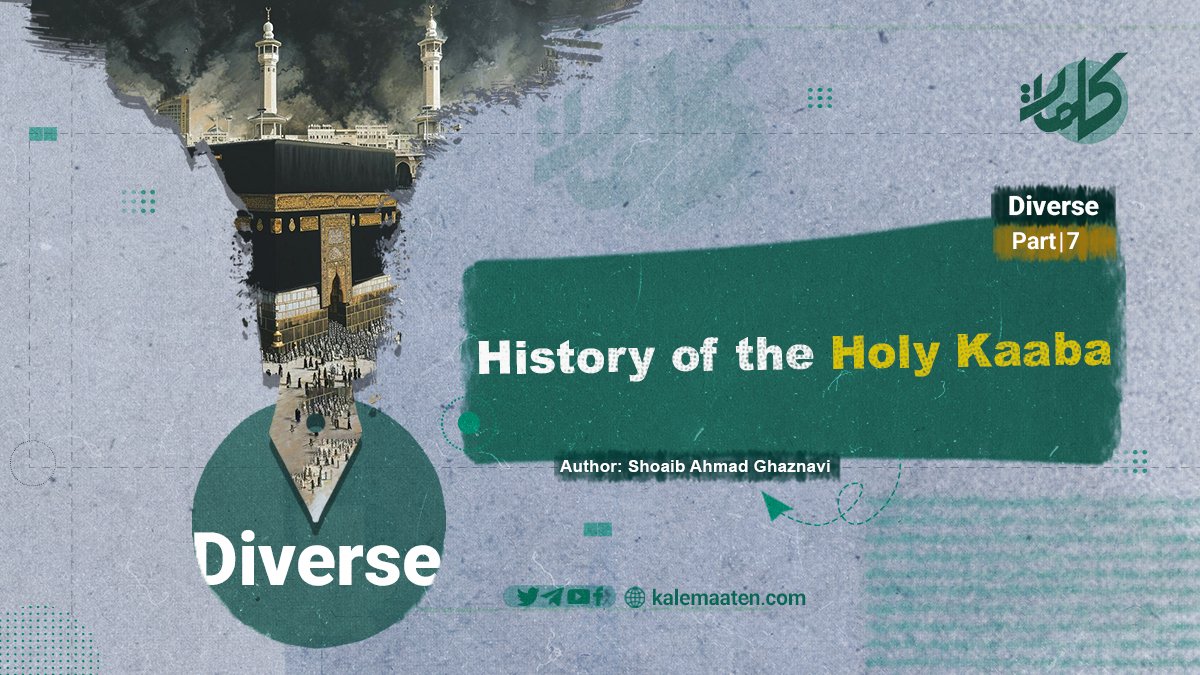
Author: Shoaib Ahmad Ghaznavi
History of the Holy Kaaba (Part 7)
Al-Multazam (The Threshold of the Ruler’s Doorway)
Al-Multazam refers to the two-meter space between the Black Stone (Hajar al-Aswad) and the door of the Kaaba, where worshippers attach themselves in supplication and humility. It is noted that Prophet Ibrahim (PBUH) did not position the Kaaba’s door in the center but placed it near the Black Stone so that this area would be the Multazam. Some also refer to it as “Al-Muta’awwidh” (the place of seeking refuge).
It is a Sunnah for a person to press their chest, face, arms, and palms against this section of the Kaaba at any time and to supplicate to Allah with any prayers they wish.
Mujahid (MAPH) said: “I saw Ibn Abbas (MAPH) seeking refuge in Allah between the Black Stone and the door of the Kaaba.”
It is narrated from Abdullah ibn Umar (MAPH) that he placed his chest, hands, and cheek against the Multazam and said: “I saw the Messenger of Allah (PBUH) doing the same.”
Standing at the Multazam is a symbolic image of a servant throwing themselves at the threshold of their living and eternal Master, fleeing to Him, seeking refuge in His sanctuary, and turning toward His presence. Anyone performing Umrah, Hajj, or simply visiting the Sacred House of Allah may stand there at any time, as it is not a specific ritual of Hajj or Umrah.
It is not appropriate for women to stand at the Multazam when men are present due to the risk of physical contact. However, they may stand behind the Multazam, supplicate, and ask their Lord for whatever they desire, as these are places where supplications are answered, if Allah wills.
Zamzam (The Most Honorable Water)
Zamzam is the name of the well located to the east of the Black Stone and south of the Maqam Ibrahim (Station of Abraham). The name is derived from the word zamzama, meaning a continuous murmuring sound. The well is also known by other names such as Ash-Shibaa‘ah, Hazmah, Al-Malik, and Rakdhat Jibreel (the striking of Jibreel). The water of Zamzam springs from three sources: one from Mount Abu Qubays near Mount Safa, another from Mount Marwah, and the third—its most abundant source—from the direction of the Black Stone.
This blessed water gushed forth in the Sacred Sanctuary of Allah by the will of Jibreel (MAPH), and the heart of the Messenger of Allah (PBUH) was washed with it. What a blessed water it is! The Prophet (PBUH) said: “This water is blessed. It is nourishment in itself.”
In a narration by Jabir (MAPH), the Prophet (PBUH) said: “Zamzam water is for whatever purpose it is drunk.”
The Messenger of Allah (PBUH) encouraged people to drink Zamzam abundantly, allowing it to fill and spread throughout their bodies. He also said: “The difference between us and the hypocrites is that they do not drink enough Zamzam water.”
After the time of Prophet Ismail (PBUH), during the era of the Jurhum tribe, the location of the Zamzam well was lost due to their negligence toward the sanctity of the Kaaba. However, Abdul Muttalib, the grandfather of the Prophet (PBUH), rediscovered and re-excavated it.
For centuries, people descended into the well to drink its water. However, in the year 1425 AH, due to the expansion of the Mataf (circumambulation area) and to prevent congestion during Tawaf, the well was covered. The General Presidency for the Affairs of the Two Holy Mosques arranged designated areas inside and outside the mosque for men and women to drink Zamzam water, and ultraviolet rays are used to sterilize the water pipes. Special stations are now dedicated to serving Zamzam water.
It is permissible to transport Zamzam water outside of Makkah, as the Prophet (PBUH) used to carry it in containers and water skins.
Many scholars permit using Zamzam water for purification (istinja), except for the Hanafis, who consider it undesirable unless done for the purpose of seeking blessings (tabarruk). Al-Tabari even issued a fatwa prohibiting it.
It is recommended to drink Zamzam water after performing Tawaf, and nothing should be added to it, as it has a unique and sacred taste that should not be altered. It is also a Sunnah to seek healing from all illnesses through Zamzam water.
The Prophet (PBUH) said: “Indeed, fever is from the heat of Hellfire, so cool it down with water” or “cool it down with Zamzam water.” It is also permissible to ask Allah for healing from other diseases and even worldly needs while drinking Zamzam, as the Prophet (PBUH) said: “Zamzam water is for whatever purpose it is drunk.”
Continues…


